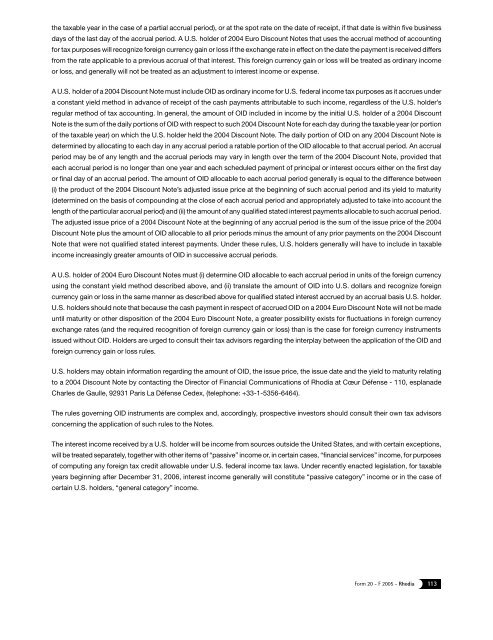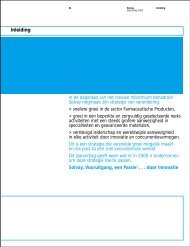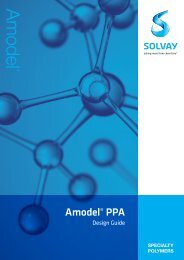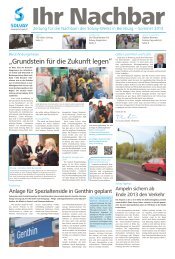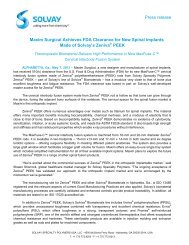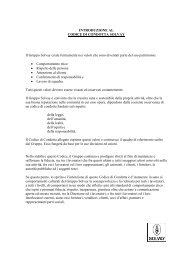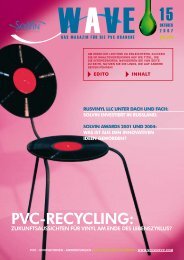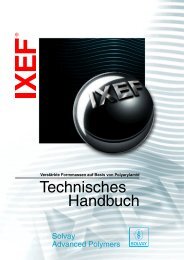Form 20-F 2005
Form 20-F 2005
Form 20-F 2005
You also want an ePaper? Increase the reach of your titles
YUMPU automatically turns print PDFs into web optimized ePapers that Google loves.
the taxable year in the case of a partial accrual period), or at the spot rate on the date of receipt, if that date is within five business<br />
days of the last day of the accrual period. A U.S. holder of <strong>20</strong>04 Euro Discount Notes that uses the accrual method of accounting<br />
for tax purposes will recognize foreign currency gain or loss if the exchange rate in effect on the date the payment is received differs<br />
from the rate applicable to a previous accrual of that interest. This foreign currency gain or loss will be treated as ordinary income<br />
or loss, and generally will not be treated as an adjustment to interest income or expense.<br />
A U.S. holder of a <strong>20</strong>04 Discount Note must include OID as ordinary income for U.S. federal income tax purposes as it accrues under<br />
a constant yield method in advance of receipt of the cash payments attributable to such income, regardless of the U.S. holder’s<br />
regular method of tax accounting. In general, the amount of OID included in income by the initial U.S. holder of a <strong>20</strong>04 Discount<br />
Note is the sum of the daily portions of OID with respect to such <strong>20</strong>04 Discount Note for each day during the taxable year (or portion<br />
of the taxable year) on which the U.S. holder held the <strong>20</strong>04 Discount Note. The daily portion of OID on any <strong>20</strong>04 Discount Note is<br />
determined by allocating to each day in any accrual period a ratable portion of the OID allocable to that accrual period. An accrual<br />
period may be of any length and the accrual periods may vary in length over the term of the <strong>20</strong>04 Discount Note, provided that<br />
each accrual period is no longer than one year and each scheduled payment of principal or interest occurs either on the first day<br />
or final day of an accrual period. The amount of OID allocable to each accrual period generally is equal to the difference between<br />
(i) the product of the <strong>20</strong>04 Discount Note’s adjusted issue price at the beginning of such accrual period and its yield to maturity<br />
(determined on the basis of compounding at the close of each accrual period and appropriately adjusted to take into account the<br />
length of the particular accrual period) and (ii) the amount of any qualified stated interest payments allocable to such accrual period.<br />
The adjusted issue price of a <strong>20</strong>04 Discount Note at the beginning of any accrual period is the sum of the issue price of the <strong>20</strong>04<br />
Discount Note plus the amount of OID allocable to all prior periods minus the amount of any prior payments on the <strong>20</strong>04 Discount<br />
Note that were not qualified stated interest payments. Under these rules, U.S. holders generally will have to include in taxable<br />
income increasingly greater amounts of OID in successive accrual periods.<br />
A U.S. holder of <strong>20</strong>04 Euro Discount Notes must (i) determine OID allocable to each accrual period in units of the foreign currency<br />
using the constant yield method described above, and (ii) translate the amount of OID into U.S. dollars and recognize foreign<br />
currency gain or loss in the same manner as described above for qualified stated interest accrued by an accrual basis U.S. holder.<br />
U.S. holders should note that because the cash payment in respect of accrued OID on a <strong>20</strong>04 Euro Discount Note will not be made<br />
until maturity or other disposition of the <strong>20</strong>04 Euro Discount Note, a greater possibility exists for fluctuations in foreign currency<br />
exchange rates (and the required recognition of foreign currency gain or loss) than is the case for foreign currency instruments<br />
issued without OID. Holders are urged to consult their tax advisors regarding the interplay between the application of the OID and<br />
foreign currency gain or loss rules.<br />
U.S. holders may obtain information regarding the amount of OID, the issue price, the issue date and the yield to maturity relating<br />
to a <strong>20</strong>04 Discount Note by contacting the Director of Financial Communications of Rhodia at Cœur Défense - 110, esplanade<br />
Charles de Gaulle, 92931 Paris La Défense Cedex, (telephone: +33-1-5356-6464).<br />
The rules governing OID instruments are complex and, accordingly, prospective investors should consult their own tax advisors<br />
concerning the application of such rules to the Notes.<br />
The interest income received by a U.S. holder will be income from sources outside the United States, and with certain exceptions,<br />
will be treated separately, together with other items of “passive” income or, in certain cases, “financial services” income, for purposes<br />
of computing any foreign tax credit allowable under U.S. federal income tax laws. Under recently enacted legislation, for taxable<br />
years beginning after December 31, <strong>20</strong>06, interest income generally will constitute “passive category” income or in the case of<br />
certain U.S. holders, “general category” income.<br />
<strong>Form</strong> <strong>20</strong> - F <strong>20</strong>05 - Rhodia<br />
113


